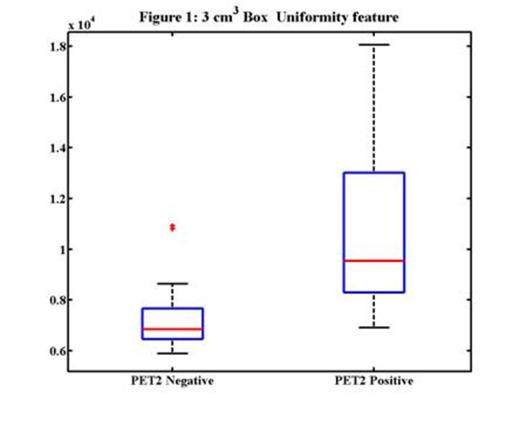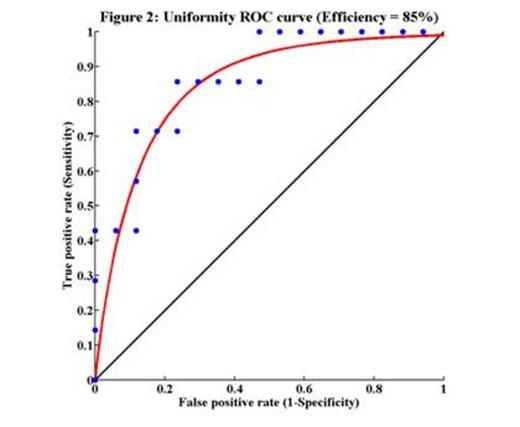Abstract
BACKGROUND
Interim 18F-fluorodeoxyglucose positron tomography (PET) has been shown to be a prognostic factor for clinical outcome in Hodgkin lymphoma (HL). Predicting an early cancer's response to chemotherapy could enhance clinical care management by enabling the personalization of treatment plans based on predicted outcome. Tumour texture can be measured from medical images that provide a non-invasive method of capturing intratumoral heterogeneity and hence could potentially allow a prior assessment of a patient's predicted response to treatment.
PURPOSE
The aim of the study was to assess the applicability of the pre-treatment PET-based textural analysis (TA) in a cohort of early stage HL and its correlation with early response to chemotherapy.
METHODS
We reviewed medical records of patients with early stage HL diagnosed between January 2012 and December 2014 treated with standard combined modality therapy. All PET scans were reviewed by a local nuclear medicine physician, blinded for the clinical outcome and interim PET (iPET) results. TA was applied to pre-treatment PET images in order to extract features which can be used as prognostic factors for early treatment response. TA features provide unique information about the spatial variation of pixels in the segmented Volume of Interests (VOIs) where it is applied thus they are able to quantitatively score tumor heterogeneity. In order to do this, two different strategies were employed. First was to segment pathological lymph nodes with a 40% of SUVmax isocontour algorithm. Each lymphnode was analysed with TA as a "stand-alone patient" in order to increase the number of observations. Second strategy was to extract two cubes of 3 and 4 cm3 of volume from the highest metabolically active mediastinic region. Seventy-four textural features were calculated mathematically and then analyzed with statistical non parametric test (Kruskall Wallis test). Features which showed prognostic power (or patient stratification ability) were employed to build Receiver Operating Curve (ROC) in order to score their sensibility and specificity.
RESULTS
Twenty-four patients were selected. After iPET revision, 17 patients were considered disease free after 2 cycles of ABVD whereas the remaining 7 patients had a positive iPET. Considering each lymph node as a "stand-alone patient" we were able to analyse 84 cases.The Kruskall Wallis test showed that 5 out of 74 TA features could separate iPET responders and non-responders patients with statistical significance (p<0.01). Among these 5 features (40% SUVmax segmentation algorithm applied on captant lymph nodes), "coarseness feature" (a feature that scores the granularity of lymph node activity) is able to provide a good discrimination (p<0.005) between iPET responders and non-responders, with an efficiency of 73% (77% sensitivity, 70% specificity). This means that lymph nodes which appear coarser in pre-treatment PET images have a higher probability of being positive at iPET. Results obtained employing the second technique showed that 4 features are able to predict iPET response with statistical significance (p<0.02) but with an even better discrimination efficiency up to 85% employing "uniformity feature" as prognostic factor as can be seen in Fig. 1 and Fig. 2.
CONCLUSION
Textural biomarkers as an intratumoral heterogeneity quantification tool hold great promise for the early prediction of tumor outcomes. In this work, we demonstrated the applicability of the PET-based TA in a cohort of cases with early HL. This method requires further validation in a larger prospective study.
No relevant conflicts of interest to declare.
Author notes
Asterisk with author names denotes non-ASH members.



This feature is available to Subscribers Only
Sign In or Create an Account Close Modal